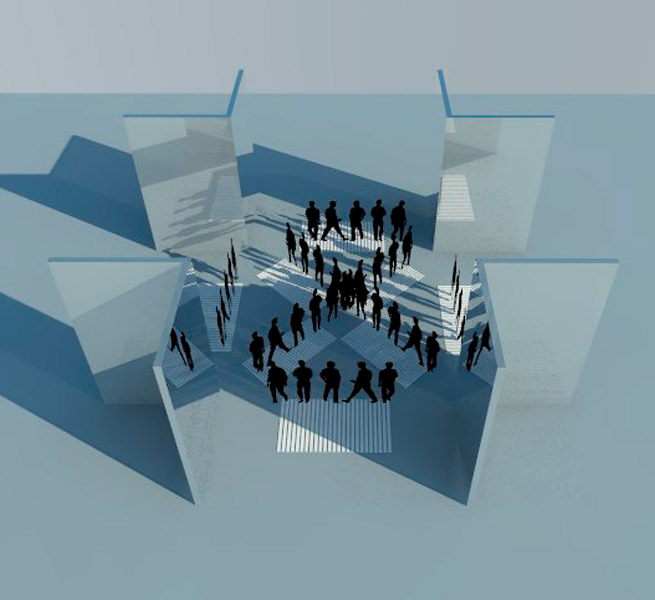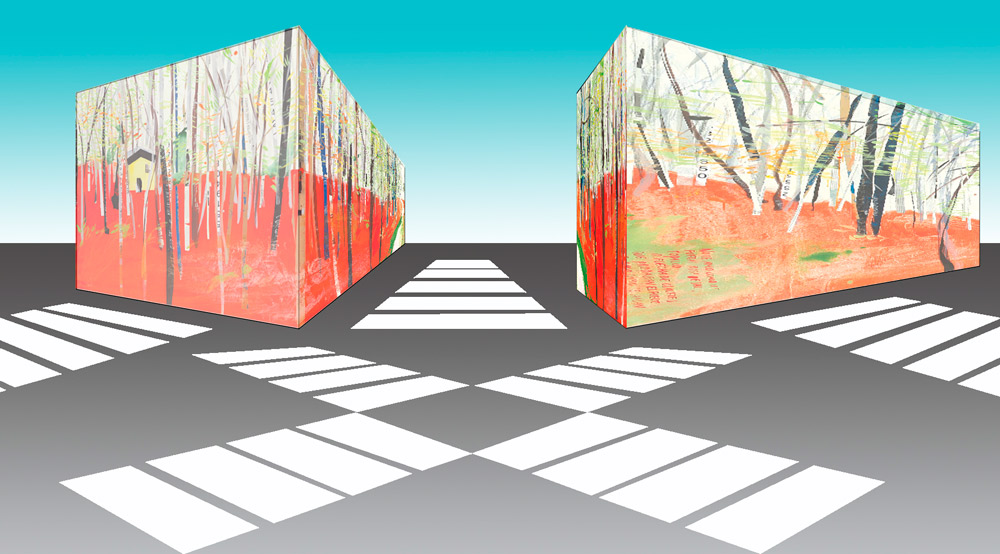Shibuya

Shibuya in Tokyo is not only the most iconnic pedestrian crossing in the world, but also a neighbourhood, noisy, trendy, crowded, and entertaining. Every time the traffic lights turn green a human tide covers the asphalt, turning the place into the largest footbridge of people in existence. A synchronised performance to be seen and experienced first-hand.
Shibuya starts here.
Regina + Japan
Entertainment, movement, environment.
Regina promotes her origins through her landscapes with repeated elements found in most of her work: roads, flowers, leaves, trees, forests, letters, and houses.
Travel is her source of inspiration: from Japan she recalls striking images that she captured with her camera and that help her to capture the visions of a particular moment.
Japan provided her with a visual and experimental richness allowing her to develop an enduring interpretation of this culture.
She was privileged to exhibit at Dos Sibaris Gallery, Nishinomiya (Japan).

Aims
Through an urban planning project, we aim to improve the social environment of the city and the interrelationship between its inhabitants, responding to urban needs: art, protection, rest, silence, and meditation in the midst of a disturbing world.
We bring the world’s most emblematic crossroads as an outdoor, adaptable, mutable and itinerant sideboard sharing unique experiences.
We want to move Shibuya to other cities around the world.
Art & Architecture
The invisible line is achieved. They complete and complement each other. Regina with her strokes brings order to chaos, nature to the city, and evokes the colors of autumn, the smell of rain, water splashing on your back and feet when running. When hypnotised by the umbrella of a Geisha, the beauty forces you to stop in the midst of so much noise, to listen to the disturbing silence.
The pedestrian crossings represent movement, order, continuity, infinity, an echo of the works of the writer Borges or the artist Piranesi.
Narrative
The Shibuya junction is presented: four corners at its highest point. A symbol, an icon, a cross where art and spectator interact.
Indefinite space
Transition between interior and exterior:
Possibility of beginning the experience of the installation from outside Macba (Barcelona Museum of Contemporary Art).
In Japanese architecture this third ‘undefined’ space is a space in itself. It is called ‘engawa’ and a continuous interior/exterior space is achieved, freely flowing through art where we incorporate the temporal duration of the experience of the installation.
The visitor will choose to observe the spaces in the tori-niwa2 or inside urban buildings or ´machiyas´. It is a space or border that mediates between intimacy and the vastness of the outside world.
Outdoor/ Street/ Movement/ Cityscape
The street, a vital stage, is born of the relationships established by the buildings and in turn the public space generated between them. It gains prominence as a place for social relations.
The spectator is a pedestrian in the work. The route will be through the crossroads, feeling as if you are in the middle of Shibuya.
From the circulatory function, the road layout becomes an autonomous system in such a way that it begins to undergo a transformation.
Video Art
The installation uses different visual and sound resources to recreate the Shibuya experience. Projections and photograms. Conceptually it will play with the shadows of the public mixed with real projections of the crossing in Tokyo.
Post-produced images that include Regina’s pictorial work in movement. The colours of the paintings and videos will be accompanied by an immersive sound experience that reproduces the urban life of the place and the imaginary representation of a natural silence.






